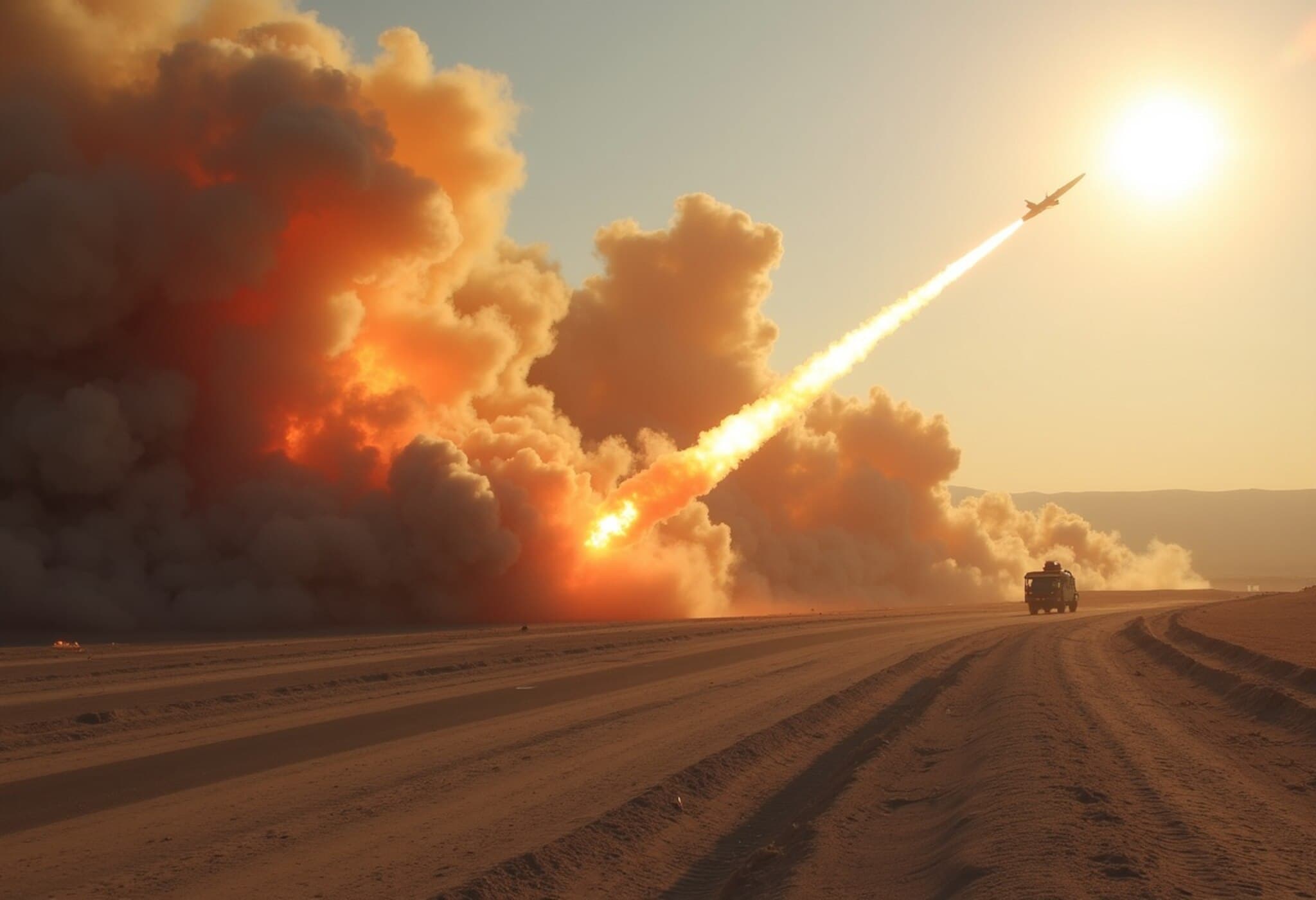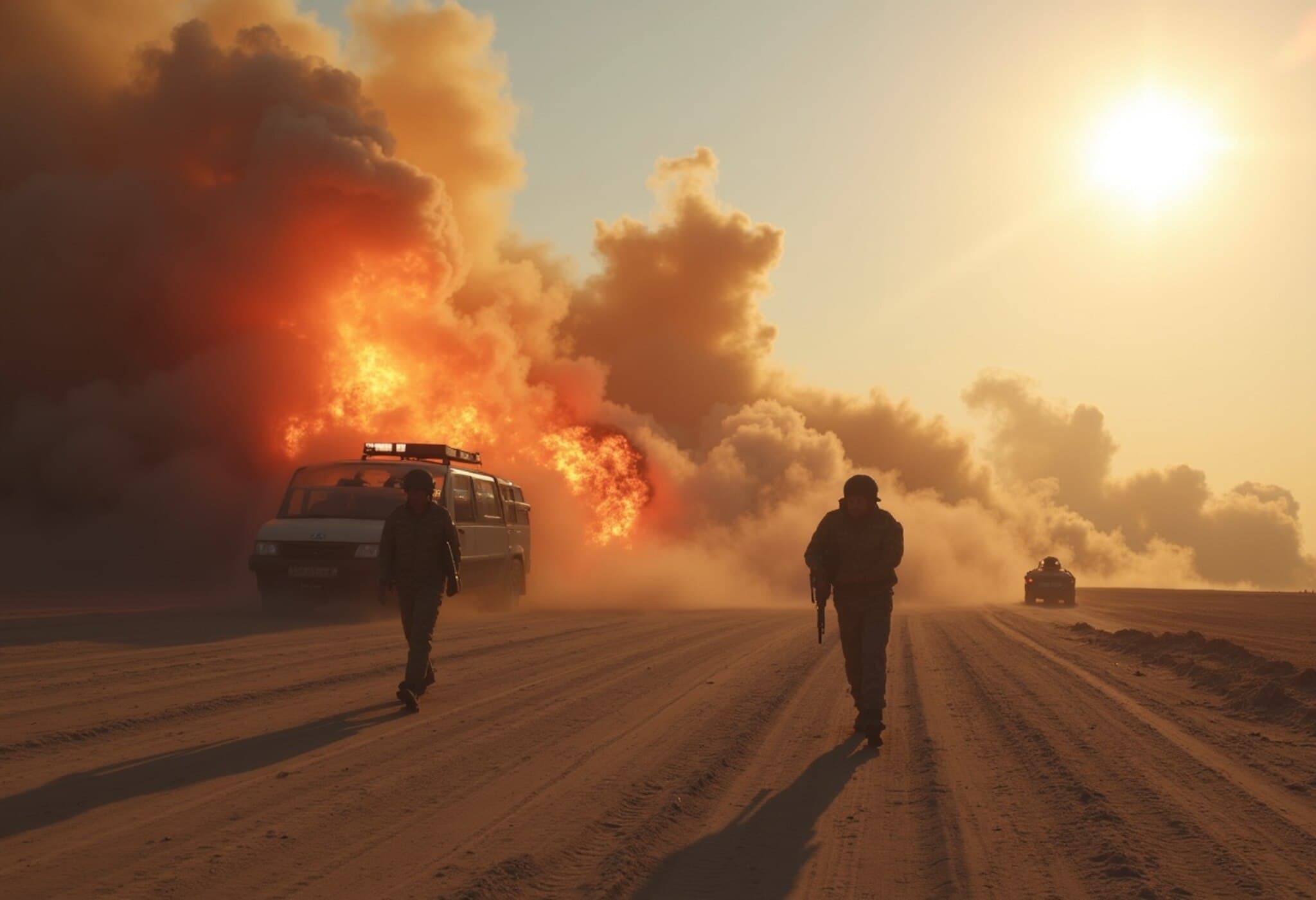Satellite Evidence Shows Iran's Target on US Communications Facility at Qatar’s Al Udeid Air Base
On June 23, 2025, satellite imagery unveiled a significant yet underreported detail of Iran's missile strike on the Al Udeid Air Base near Doha, Qatar—a critical hub for U.S. Central Command operations in the Middle East. While the assault was Iran's swift retaliation following U.S. strikes on Iranian nuclear facilities, new analysis indicates that a specialized geodesic dome designed for secure U.S. military communications suffered direct damage.
Geodesic Dome: The Silent Backbone of U.S. Military Communications
High-resolution photos from Planet Labs PBC captured the geodesic dome intact on the morning of the attack, housing a $15 million modernized enterprise terminal, including a satellite dish shielded within its radome. Within 48 hours, follow-up images revealed the dome had vanished entirely, replaced by clear signs of burning and structural damage to a nearby building, while the broader airbase remained conspicuously intact.
Experts and analysts suggest the precision of the strike and the limited surrounding destruction imply the use of a bomb-carrying drone—highlighting an evolution in Iran’s tactical capabilities with potentially alarming implications for regional security dynamics.
Contextualizing the Strike Amid Rising Tensions
The attack took place days after the U.S. launched bombing raids on Iranian nuclear sites, escalating a short but intense conflict that abruptly halted after a ceasefire brokered by former President Donald Trump. Trump later characterized the Iranian retaliation as a "very weak response," emphasizing that prior intelligence had enabled U.S. and Qatari defenses to intercept 13 of 14 missiles, allowing no casualties or operational disruptions to vital American military readiness in the region.
Contrasting these official statements, Iranian Revolutionary Guard sources portrayed the strike as devastating, claiming total destruction of the base’s equipment and severance of vital communication links. A hard-line cleric warned that the attack "completely cut" U.S. command streams from Al Udeid to other regional bases, suggesting Iranian confidence in their strategic messaging.
Strategic and Policy Implications for U.S. and Allies
- Vulnerability of High-Tech Assets: The incident underscores how advanced military communication infrastructures remain exposed to emerging drone and missile threats, pressing the need for enhanced satellite protection and airbase defenses.
- Diplomatic Nuance: Iran’s apparent advance warning and Trump’s downplaying of the strike reflect complex back-channel negotiations influencing ceasefire outcomes and regional power balances.
- Regional Security Concerns: The strike near a U.S. base in a strategic Gulf state like Qatar exemplifies how proxy conflicts can ripple into broader geopolitical instabilities involving key American partners.
Underreported Angles and Broader Questions
While headlines focused on the brief war and ceasefire, less attention was paid to the symbolic and material targeting of U.S. command capabilities. What does this suggest about future Iranian tactics? How might the U.S. bolster satellite and drone defenses at overseas bases amid increasingly asymmetric warfare? Moreover, the quiet damage to a critical communications node raises questions about U.S. resilience and contingency planning that remain largely unaddressed in public discourse.
Editor’s Note
The damaging of the geodesic communications dome at Al Udeid Air Base offers a compelling case study in modern warfare’s evolving landscape, where technological assets are as much targets as personnel. It also highlights the delicate dance of brinkmanship and diplomacy that shaped this rapid escalation and de-escalation cycle between Iran and the U.S.-Israel axis. Readers should consider how this tactical episode may forecast a shift toward more covert, technologically sophisticated confrontations in the region, urging reassessment of both military preparedness and diplomatic engagement strategies.



















